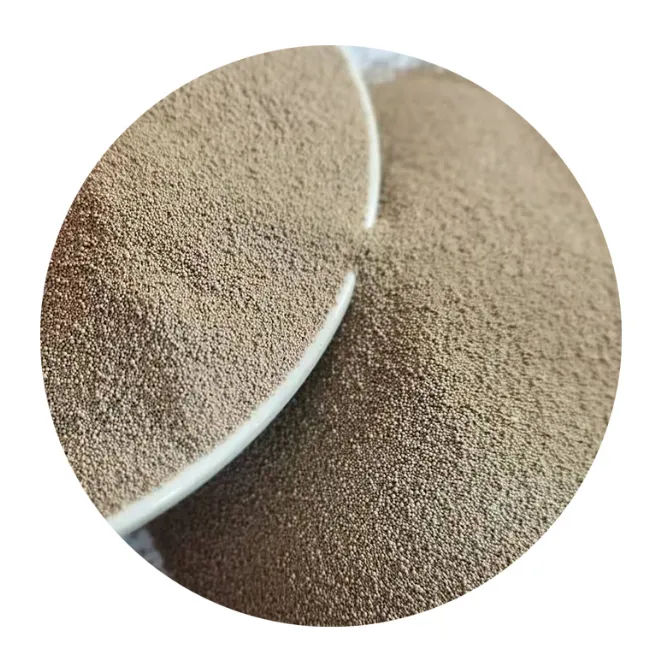3D printing technology has revolutionized traditional manufacturing processes, particularly in 3D printing for sand casting. By combining additive manufacturing with casting, this method has enabled faster production, greater precision, and cost efficiency. Whether you're using a 3D printer for sand casting or exploring innovative methods like 3D printing with sand, this guide highlights how the technology is transforming the industry.

Advantages of 3D Printing for Sand Casting
The integration of 3D printing for sand casting has streamlined complex mold production. Traditional mold-making methods are labor-intensive and time-consuming, but with 3D printing for sand casting, manufacturers can quickly create molds with intricate geometries. This technique also reduces material waste, making it more cost-effective and environmentally friendly.
Using 3D printing for sand casting allows for on-demand production, eliminating the need for extensive storage of molds. Industries such as automotive and aerospace benefit greatly from 3D printing for sand casting, as it enables the creation of prototypes and functional parts with high precision. The scalability and versatility of 3D printing for sand casting make it a preferred choice for modern manufacturers.
Exploring 3D Printer Sand Casting Techniques
Investing in a 3D printer for sand casting provides access to a wide range of applications. These printers use specialized sand and binders to construct molds layer by layer. The precision of a 3D printer for sand casting ensures that molds are accurate and free of defects, which is crucial for producing high-quality castings.
A 3D printer for sand casting can produce molds for both small-scale projects and large industrial applications. Its ability to replicate detailed patterns is unmatched, making it ideal for intricate designs. The speed of a 3D printer for sand casting reduces lead times significantly, enabling faster delivery of finished products to customers.
Innovative Applications of 3D Printing with Sand
The use of 3D printing with sand has opened up new possibilities for creating molds and cores with complex shapes. 3D printing with sand eliminates the limitations of traditional casting methods by offering greater design freedom. This process involves layering sand and binding agents to form molds with exceptional accuracy.
One of the key benefits of 3D printing with sand is its ability to produce molds for large-scale components. This method is particularly advantageous for industries requiring high-performance parts, such as energy and marine sectors. The flexibility of 3D printing with sand allows for quick design modifications, enabling manufacturers to adapt to changing project requirements.
Perfecting Sanding and Painting 3D Prints
Finishing techniques like sanding and painting 3D prints enhance the appearance and functionality of printed components. Sanding and painting 3D prints are essential steps in achieving a smooth and professional finish. Proper sanding removes imperfections, while painting adds a protective layer and aesthetic appeal.
When sanding and painting 3D prints, it's crucial to use the right tools and materials. Start with coarse sandpaper to remove large imperfections, then gradually move to finer grits for a polished surface. After sanding and painting 3D prints, apply a primer for better paint adhesion. This process ensures that sanding and painting 3D prints result in durable and visually appealing parts.
Creating Patterns with 3D Printing for Sand Casting
One of the most exciting applications is 3D printing patterns for sand casting, which simplifies the mold-making process. 3D printing patterns for sand casting allows manufacturers to produce highly detailed and accurate patterns that can be directly used for mold creation. These patterns are ideal for both prototype and production runs.
By 3D printing patterns for sand casting, manufacturers can achieve greater consistency and reduce the time required for manual pattern-making. The precision of 3D printing patterns for sand casting ensures that the molds fit perfectly, resulting in fewer defects and higher-quality castings. This technique has become a game-changer in the casting industry.
For added strength and stability, many manufacturers fill 3D prints with sand. This process enhances the structural integrity of 3D-printed parts, making them suitable for heavy-duty applications. Filling 3D prints with sand also improves weight distribution, which is particularly important for functional components.
The process to fill 3D prints with sand involves creating hollow parts and then pouring sand into the cavities. This method is widely used in industries requiring robust and durable parts. By choosing to fill 3D prints with sand, manufacturers can extend the lifespan of their components while maintaining cost efficiency.
The advancements in 3D printing for sand casting, including the use of a 3D printer for sand casting and innovative techniques like 3D printing with sand, have transformed traditional manufacturing processes. From sanding and painting 3D prints to 3D printing patterns for sand casting, each step contributes to creating high-quality products. Additionally, the ability to fill 3D prints with sand enhances durability, making 3D printing an invaluable tool for modern manufacturing. With its growing applications and potential, 3D printing is set to revolutionize the casting industry for years to come.
Post time:3월 . 24, 2025 16:05Next:Foundry Sand Options and Processes
